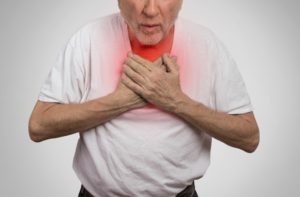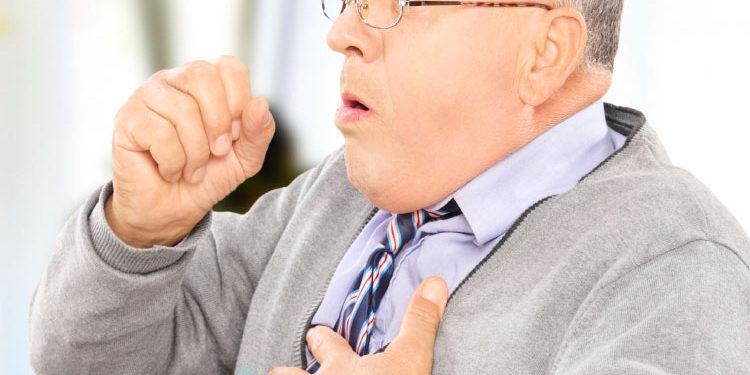This page is also available in:
![]() English
English
Chronic obstructive pulmonary disease (COPD) is a group of serious diseases that affect the lungs. Among the most common diseases are chronic bronchitis and emphysema. Many if not most people living with COPD are affected by both. COPD is a progressive disease, which means that symptoms worsen over time.
Do you think you might have COPD? Read on to learn about the different stages of COPD and the associated symptoms. If you are experiencing any of these symptoms, you should schedule an appointment with your doctor immediately.
Already diagnosed with COPD? Learn to identify signs of an exacerbation or flare-up. If you think you are having a flare-up, you should speak to a healthcare professional right away.
What are the symptoms of COPD?

Early symptoms of COPD may be mild and easily confused with those of a cold, which is why some people end up dismissing them altogether.
They include:
- Occasional shortness of breath, often after exercise
- A mild, recurring cough
- Needing to clear your throat often, particularly after waking up
At this stage, some people might start making subtle lifestyle changes, such as avoiding certain physical activities. Have you noticed any of these symptoms?
If so, you should schedule an appointment to speak to your doctor as soon as possible. Early diagnosis and treatment can help to reduce symptoms and slow the progression of the disease.
Symptoms of COPD get worse over time as the lungs sustain more damage, making them harder to ignore.
Some common symptoms as the disease progresses include:
- Frequent shortness of breath, even after mild activity
- A sensation of tightness or pressure in the chest
- Wheezing, or breathing noisily
- A persistent cough, with or without mucus
- Needing to clear mucus from your lungs every day, and not just in the morning
- Frequent respiratory illnesses, including colds and flu
- Lack of energy

As COPD continues, late-stage symptoms can include:
- Weight loss
- Swelling of the legs, ankles, or feet
- Chronic fatigue
Early symptoms of COPD are often overlooked and fairly easily managed. But in the later stages of COPD, you may not be able to take care of yourself and are at increased risk of other illnesses.
Signs You’re Having an Exacerbation
From time to time, people affected by COPD may experience a flare-up of severe symptoms, also known as an exacerbation.
Often, these periods of severe symptoms are triggered by viruses or bacterial infections—for example, contracting a cold or flu. Spending time in a smoggy, smoky, or polluted environment can also affect COPD symptoms.

If you have been diagnosed with COPD, it’s important to understand the warning signs of an exacerbation. Exacerbations can be serious, and ignoring the symptoms of one may lead to hospitalization and in severe cases, can be life-threatening.
You should contact a doctor or go to the hospital right away if you are having an exacerbation. If you have medications for your flare-ups at home, your doctor can help you to know when to use them.
Your doctor can also tell you if you need to access emergency medical services for faster treatment.
You should seek immediate medical care if you or a loved one are experiencing any of the following:
- You cannot speak. You can’t seem to get your words out. During an exacerbation, you might have to use hand gestures to explain what’s wrong to someone. This is a sign that your exacerbation is serious and that you are in danger.
- Your breath is noisy or irregular. You can’t seem to breathe without wheezing or gasping—signs that mucus is blocking your airways. Rattling and gurgling may be caused by fluid in the lungs. Your breathing becomes irregular, and you feel like you are using your chest muscles to breathe rather than your diaphragm.
- Your cough has worsened. It may be more frequent or severe than before. It might be dry, or you might cough up colored phlegm. When you lie down, it gets worse.
- You feel dizzy, confused, or disoriented. Not getting enough oxygen can lead to these symptoms.
- Changes in nail or skin color. Blue- or gray-tinted fingernails, or a bluish tint around your lips, or a yellow or grey tone to your skin may indicate a lack of oxygen.
- You get headaches in the morning. Your head throbs when you wake up in the morning, because carbon dioxide has built up in your brain.
- You struggle to sleep and/or eat. You can’t seem to fall asleep, and you don’t feel like eating.
- Swollen legs, ankles, or stomach pain. These symptoms are related to problems with your heart and lungs.
- Chest Pain. Seek immediate assistance if you have chest pain.
If you think you, or someone you love, has COPD, take this COPD questionnaire and see your doctor as soon as possible.
The information in this article should not be taken as professional medical advice. If you are having issues or have health-related concerns, you should see your personal physician.


